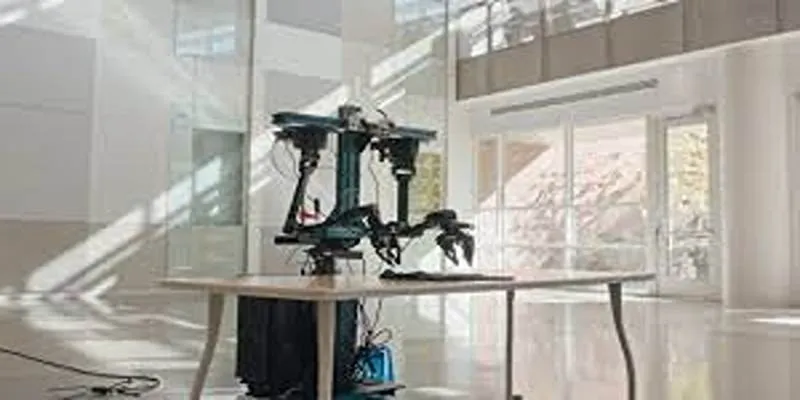Samsung has quietly stepped into one of today’s most intriguing technological frontiers — humanoid robots. Known for its dominance in smartphones, home appliances, and semiconductors, the company is now exploring machines designed to live and work alongside people. This move shows how Samsung is adapting to shifts in technology while aiming to stay ahead of competitors.
Humanoid robots are no longer just a futuristic idea; they are shaping up to become a part of everyday life. Samsung’s decision reflects not only ambition but also an understanding of the growing demand for automation that feels personal and natural.
Why Is Samsung Entering the Humanoid Robotics Space?
Samsung has been quietly building its expertise in robotics and artificial intelligence for quite some time, mainly focusing on smaller service robots and automation tools. But lately, the spotlight has shifted to humanoid robots — machines designed to look and move like people. Advances in AI and robotics have made these kinds of robots more believable, and companies like Tesla and Boston Dynamics have sparked widespread curiosity by showing what’s possible. Samsung is stepping into this evolving market just as the technology is reaching a tipping point, and more people are beginning to imagine robots as part of daily life.

Samsung’s move is not just about showing off new gadgets. In places like South Korea and Japan, where populations are aging and the workforce is shrinking, there’s a real, practical demand for robots that can help with everyday tasks in homes, hospitals, and stores. Humanoid robots are a natural fit because they can operate comfortably in spaces designed for people and perform tasks in ways that feel familiar and intuitive. Samsung aims to combine its experience in consumer electronics with these needs, creating robots that aren’t just clever, but genuinely useful in everyday life.
Samsung’s Approach to Humanoid Robots
While Samsung has yet to reveal full details about its humanoid robot, the glimpses we’ve seen suggest a clear focus on practicality and accessibility. Rather than aiming for flashy displays of athleticism or complex stunts, Samsung seems to be prioritizing reliability, ease of use, and a design that feels approachable in everyday settings. Early prototypes appear to feature arms and legs for simple movement and object handling, along with advanced AI to process voice commands, gestures, and environmental cues.
Samsung’s humanoid robot is expected to benefit from the company’s long experience with semiconductors, sensors, and display technology. Advanced cameras, depth sensors, and mapping tools will allow the robot to recognize people, objects, and rooms with accuracy, while its voice assistant capabilities make interacting with it feel intuitive. A display integrated into its head could serve as an expressive face or as a way to display helpful information. The robot’s intended roles include helping with household chores, providing reminders, delivering items, and offering basic social interaction.
Another interesting aspect of Samsung’s plan is the possibility of modular designs, where different models or configurations are adapted to suit homes, clinics, or retail spaces. This flexibility could help Samsung’s humanoid robot appeal to a wider audience without compromising on functionality. Instead of trying to build one perfect robot, Samsung may focus on creating a family of related machines, each optimized for a specific environment.
The Competition and Challenges Ahead
Samsung enters a field already crowded with ambitious players. Tesla’s Optimus robot has drawn attention for its promise of an affordable, general-purpose humanoid. Boston Dynamics has showcased impressive agility and balance with its Atlas robot, though it remains a research model for now. Japanese companies, such as Honda, have experimented with humanoid robots for decades, although none have yet become household products. Samsung will need to find its niche in this competitive landscape.

One of the biggest challenges is cost. Humanoid robots are expensive to develop and manufacture, and bringing the price down to a level that consumers can accept remains a major hurdle. Durability is another concern — robots designed for homes and workplaces must be able to operate for long periods in unpredictable environments with minimal maintenance. Social acceptance is also a factor. Even with friendly designs, it can take time before people feel at ease interacting with a robot in their personal spaces.
Samsung’s strengths could help it overcome some of these obstacles. Its ability to mass-produce high-tech devices at competitive prices may enable it to reduce costs faster than its smaller rivals. Its experience designing products for consumers means it understands how to make technology approachable and desirable. And its long-term AI research can contribute to making robots that feel smarter and more responsive.
Future Implications of Samsung’s Robotic Innovations
If Samsung succeeds in developing and deploying humanoid robots, it could change how people view robotics in daily life. Much like smartphones, robots could go from being novelties to necessities in homes and workplaces. Jobs such as carrying groceries, helping someone out of bed, greeting customers, or reminding people to take their medicine could become everyday tasks handled by machines.
For Samsung, this move is more than just another product launch. It represents a chance to redefine its role in technology at a time when competition is increasing in its traditional markets. By pushing into humanoid robotics, Samsung shows a willingness to take risks and influence new areas of innovation. At the same time, its entry may spur rivals to accelerate development, bringing humanoid robots to market sooner and improving their capabilities faster.
Conclusion
The humanoid robot race is still in its early stages, and it will take time before these machines become common in everyday life. Samsung’s decision to join this competition signals growing confidence that the market for humanoid robots is real and worth pursuing. Its entry not only adds weight to the field but also raises expectations for what such robots can achieve. Over the next few years, these machines are likely to become more advanced, more affordable, and more integrated into our routines. What was once a far-off dream is now taking shape — quietly, but steadily — and Samsung is determined to be part of that future.
 zfn9
zfn9























